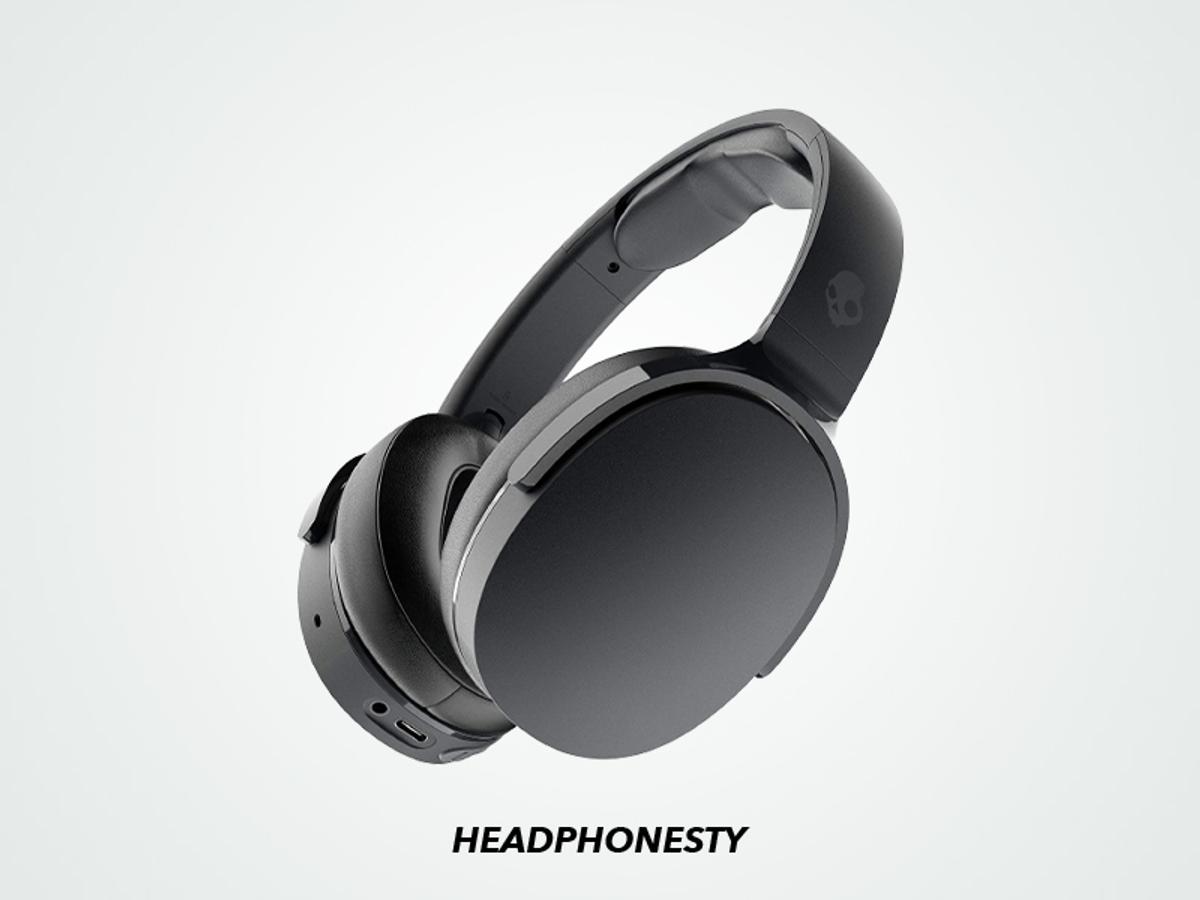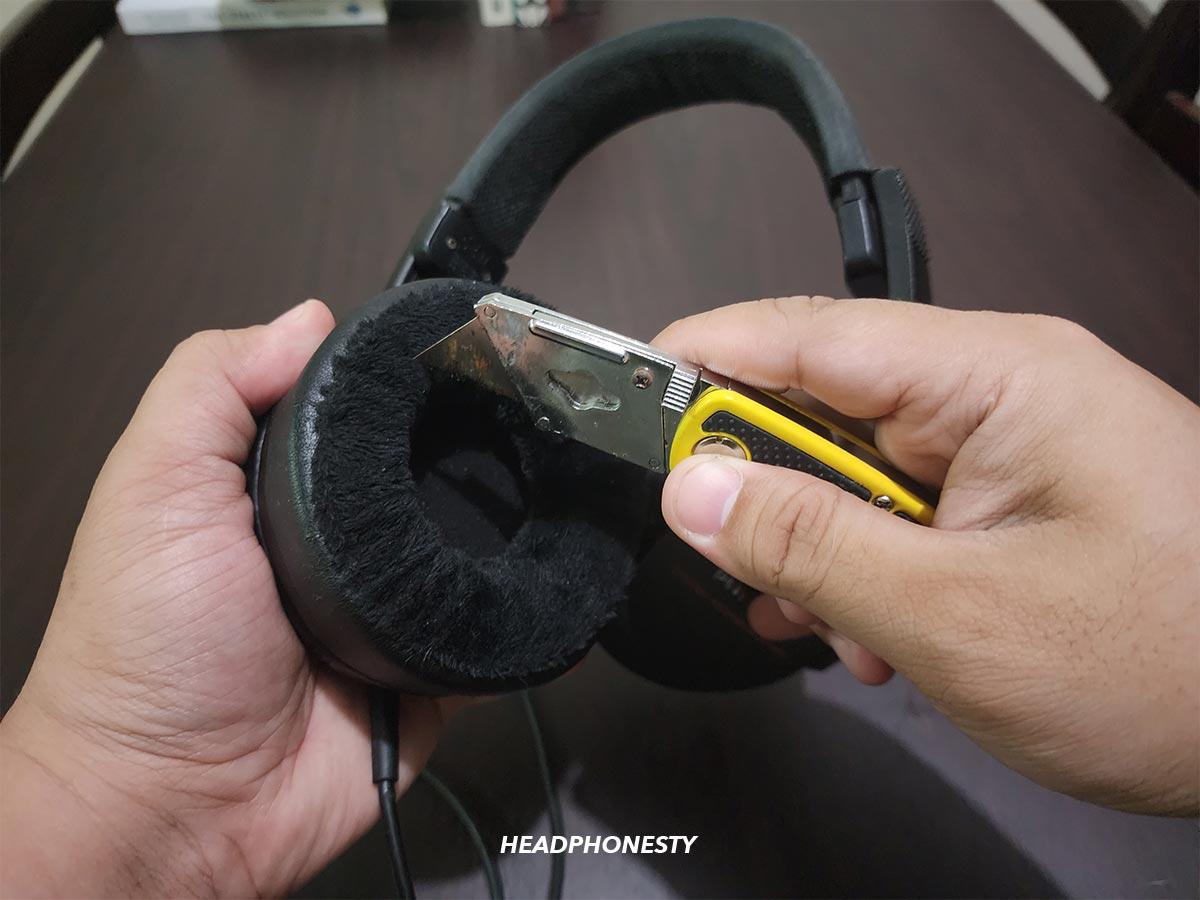Our comprehensive guide for minimizing discomfort when wearing glasses with headphones.
Headphones have evolved significantly, offering not only advanced technology but also innovative design.
However, many of these designs overlook comfort for glasses wearers, causing pain when wearing both.
Good news – you can ease this discomfort with simple adjustments on your headphones and glasses. Read on as we cover all this and more below!
1. Stretch Your Headphones to Reduce the Clamping Force

To lessen clamping force and improve headphone comfort, gently stretch your headphones over a stack of books one inch wider than your head. Monitor the fit every two hours for a day or two. If there’s not much difference after 48 hours, gradually increase the width.
2. Choose Thicker Ear Paddings

When it comes to ear paddings, the thicker, the better. Thicker cushions are more comfortable for glasses wearers because they distribute pressure evenly around the ears.
Moreover, you can also go for a different ear pad material. There are various cushion materials, but memory foam is preferred for its ability to mold to your ear shape, ensuring a comfortable fit every time.
3. Choose Over-Ear Headphones

Over-ear headphones are more comfortable because they encase the ears, minimizing direct contact on sensitive areas like the ear cartilage and temporal bone. In contrast, on-ear headphones rest directly on the ears, causing discomfort with prolonged use.
4. Cut a Gap Through the Ear Cushion

If you’re using over-ear headphones while wearing glasses, consider Whitson Gordon‘s approach from Popular Science. He customized his headphones by cutting holes in the ear paddings where his glasses’ frames sit, effectively reducing pressure on the frames.
5. Try Earbuds

If headphones aren’t doing the trick, opt for earbuds instead. Earbuds have a lower profile and fit inside the ear canal, so they won’t press against your glasses’ arms or put pressure on your temples. You can also easily adjust them without disturbing your glasses.
However, proper fit is crucial for earbuds. Ensure the earbud housing isn’t too bulky for your ears, and use the right-sized ear tips to avoid discomfort.
6. Get Glasses With Thinner Frames

Thinner frames are more comfortable with headphones due to their smaller surface area. As such, they exert less pressure on the scalp, ear cartilage, and temporal bone than thicker frames. So, if you’re a frequent headphones user and planning to purchase new glasses, remember – the thinner, the better.
3 Best Headphones for People With Glasses
Finding the perfect pair of headphones for glasses wearers can be challenging. So, we’ve selected the top three most comfortable headphones to simplify the process. Check out our choices below:
AKG Pro Audio K37

The AKG Pro Audio K371 headphones are the best wired option for glasses wearers due to ergonomic oval ear pads that use slow-retention memory foam. This molds to the user’s head and ears, ensuring a gentle fit without putting pressure on the frames.
Moreover, these headphones have a low clamping force. As such, they’ll fit securely without squeezing the sides of your head and causing pain when glasses are pressed too tightly against the temples.
Lastly, these headphones are lightweight, weighing only 255 grams. Heavier headphones can cause the glasses to dig into the scalp, but the AKG K371’s lightness helps avoid this issue, making them comfortable for extended listening sessions.
Bose QuietComfort Ultra

Glasses wearers who are looking for wireless options will appreciate the Bose QuietComfort Ultra‘s spacious ear cups and soft cushions, which provide ample space while minimizing pressure on both ears and glasses.
The adjustable headband allows users to tailor the fit to their glasses without causing any strain. Additionally, the headband’s padding ensures the headphones rest comfortably on the head without creating pressure points.
Furthermore, their lightweight design reduces overall compression on the head and ears.
HyperX Cloud II Wireless

The HyperX Cloud II Wireless headphones are ideal for glasses-wearing gamers, offering comfort and functionality. Their ear cushions, made of premium memory foam and soft leatherette, adapt to the user’s head shape and frames.
The super flexible aluminum headband is durable and prevents the headphones from pressing too tightly against your head or glasses. And, at 300 grams, these headphones lessen pressure on the head and ears, reducing fatigue from extended use. This allows you to concentrate on your gaming without the distraction of discomfort.
Frequently Asked Questions
- Why is wearing glasses with headphones uncomfortable?
- Is it okay to wear headphones with glasses?
- How do headphone glasses work?
Why is wearing glasses with headphones uncomfortable?
Wearing glasses with headphones causes discomfort due to pressure points where the headphones press the glasses against the head or ears. Prolonged pressure can lead to ear fatigue and potentially trigger compression headaches or auricular chondritis, an inflammation of the ear cartilage.
Is it okay to wear headphones with glasses?
Absolutely. While wearing headphones with glasses can sometimes feel uncomfortable, there’s no hard rule against it. With the right combination of comfortable headphones and glasses, long listening sessions can be painless and enjoyable.
How do headphone glasses work?
Headphone glasses, also known as smart glasses or bone conduction glasses, function like wearable computers with varying features by brand. They can be controlled through touch, voice, gestures, or eye-tracking. Some models allow movie and video game streaming, while others let you listen to audio or make calls via Bluetooth.

Scotch-taped a wad of cotton on the part of the headphone that was compressing the helix of the left pinna and the pain was mitigated. Thanks for this blog- it’s very helpful.
Hey headphonesty,
Too much informative article mate you should write daily basis .thanks
I put a hair tie (basically a fancy rubber band) around the over the ear headphone to basically carve out space for my glasses without permanently cutting the padding. Works great
Nicole, this is an excellent idea, thank you for sharing.
Great idea!
I work software support and use over-ear headphones on calls that sometimes will span several hours. I’ve been battling temple headaches every day.
I’ll put this trick through it’s paces! Thank you!
Nicole, do you have a picture of how that works?
Nicole, Thank you SO much for this idea. My Headphones have been killing my ears when I wear my glasses.
The problem of wearing earphones and glasses for a long time can cause ear pain or headache. At present, there is a newest glasses design, through the deformation of the temples, the temples are lifted up to avoid the earmuffs. This new way of wearing will solve this problem very well. Provides the most comfortable way to wear earmuff headphones lovers.
Use wire hangers.
Bend the wire hanger to slightly wider than the width of your head and secure it to your headphones with a thin wire.
If it’s loose, make the wire hanger narrower.
If it hurts, spread the wire hanger out more.
I’ve ended up just angling my glasses so that their ‘arms’ rest on top of the headphone ear-covers. Took a bit to adjust to the different angle, mostly because my glasses have fairly “strong” vision-correction, but afterward this has been a very comfortable compromise. This may not work if your glasses have thick ‘arms’ around the ears, but I figured I should share what worked for me.
Angling my glasses to rest over the ear cups of my over-head headphones caused me pain on my nose bridge, So, I wouldn’t recommend it but you can try and see if you can live with it.
“Pressure is inversely proportional to the surface area.”
Therefore the statement about thin-framed glasses is incorrect. I have both thin and thick-framed glasses at hand. A Superdry Chief-54, and a generic wire stemmed frame. I tried both, and I still felt discomfort with both.
Unfortunately, the only over-ear headphones I have is the iFrogz Throwbax (a Panasonic RP-HTX7-C1 copy) with thin pads.
With the generic one, I felt the discomfort sooner. The area of discomfort is above the root towards behind the helix.
With the thick and wide one, it takes more time to feel discomfort and is at the temple tips. And also some slight dizziness because of the old prescription lens, which doesn’t count.
Take this with a grain of salt. I read this article because I haven’t had an over-ear headphone in a while, and I’m thinking of getting a decent one with aftermarket pad offerings.